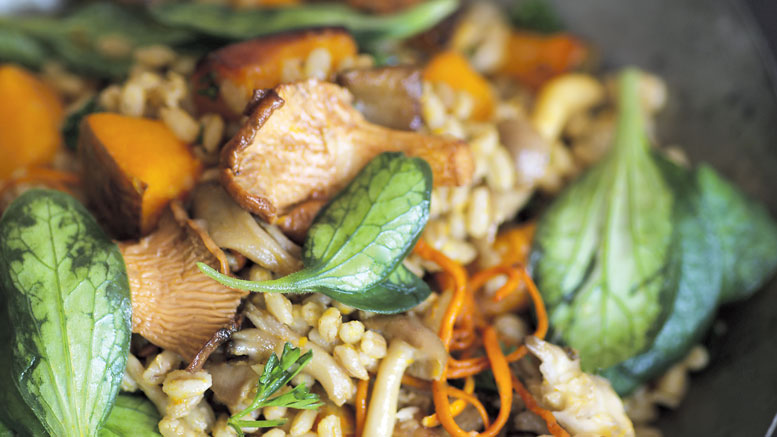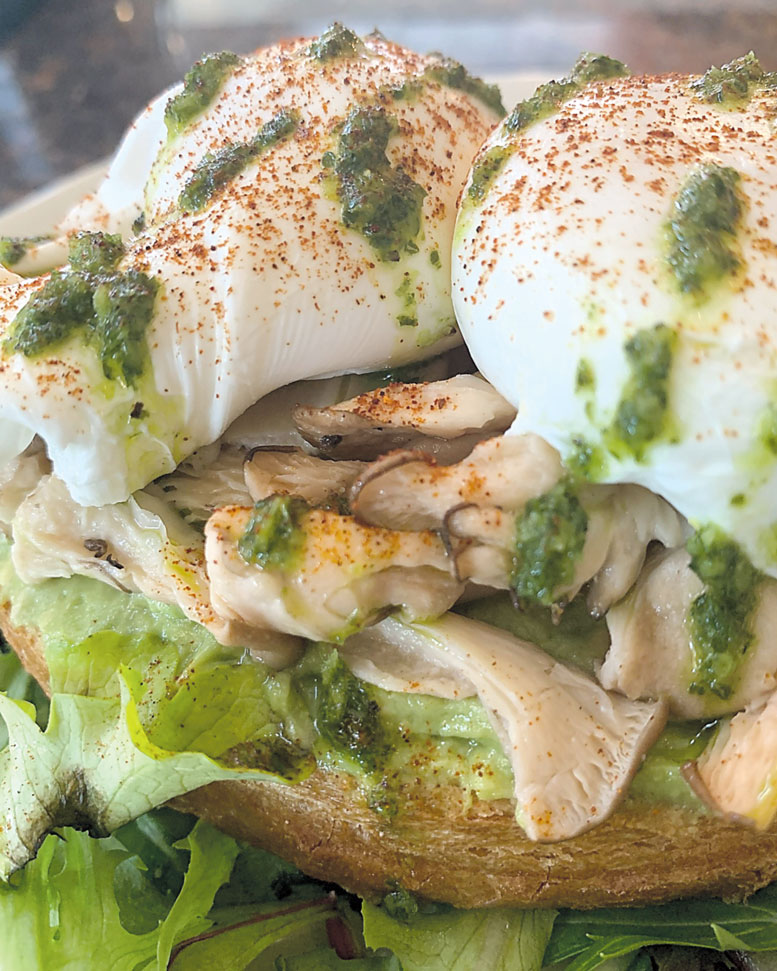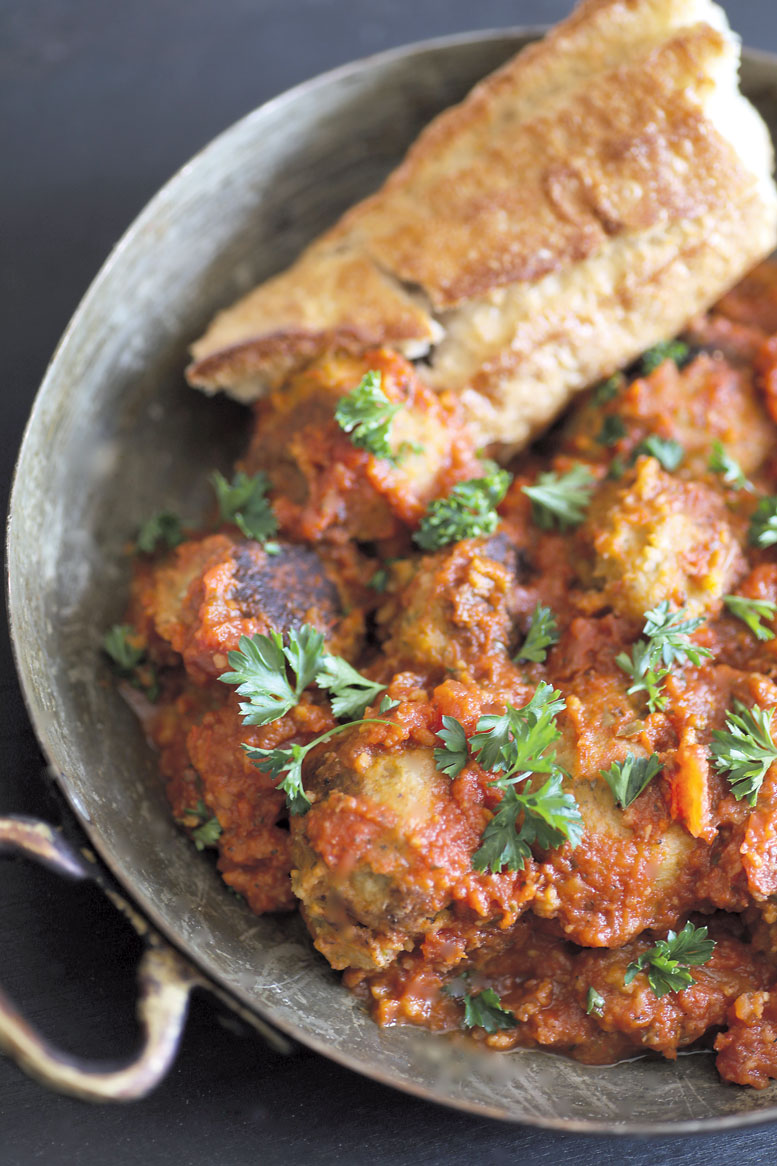’Shrooms Mushroom on Foodservice Menus
July 24, 2024 | 10 min to read
Diners at Casino Del Sol in Tucson indulge in mushroom-centric dishes that enhance both flavor and health. Featured items like Smoked Mushroom Risotto and the Roasted Mushroom Bisque exemplify the versatility of mushrooms, which serve as a protein alternative or complement. Chef Ryan Clark emphasizes their growing importance in vegan and vegetarian menus. The trend is supported by data showing that mushrooms significantly enhance menu innovation across foodservice, appealing to health-conscious diners seeking umami flavors.

PHOTO COURTESY GOURMET MUSHROOMS
Mushrooms function as a supplement or substitution for many proteins.
Diners craving mushrooms hit the jackpot at Casino Del Sol, a top-rated resort and entertainment oasis in Tucson, AZ, with 11 restaurant concepts.
For starters, Smoked Mushroom Risotto is a featured dish at the signature PY Steakhouse. Oyster and king mushrooms are cold-smoked and roasted before they are stirred into the rice. Smoked mushroom trimmings and Parmesan rinds flavor the aromatic stock, with the remaining smoked mushroom leftovers salted, dried and blended to make a finishing salt that adds a smoky and salty umami flavor that enhances the mushroom flavors.
At Bellissimo Ristorante Italiano, the Roasted Mushroom Bisque features a blend of fresh shiitake, cremini and oyster mushrooms, oven-roasted with whole garlic cloves, shallots and thyme, then cooked with mushroom stock made from trimmings, cream and sherry vinegar.
That’s not all. There are mushrooms in the Moo Goo Gai Pan at Ume, a Mushroom & Swiss Burger at Moby’s, and mushrooms on the Supreme Pizza at StreetScape Pizza & Deli.
“Mushrooms bring a lot of flavor and umami to dishes,” says Ryan Clark, the Culinary Institute of America-trained executive chef at Casino Del Sol, who holds the distinction of being Tucson’s Iron Chef for three consecutive years. “Health-conscious diners are a quickly growing category for restaurants. Mushrooms help develop deep flavors for vegan and vegetarian dishes, whether they are the dish’s star or a component that helps build and bring a recipe together.”
Clark says mushrooms can function as a supplement or substitution for many proteins. “We often see this on menus as blended burgers or mushroom ‘steaks’ replacing the center-of-the-plate proteins.”
Mushrooms’ popularity puts them on plates across the board of foodservice operators, according to Circana Supply Track 2024 data, as shared by the Mushroom Council, based in Lee’s Summit, MO.
“Within the broadliner universe, full-service restaurants (FSR) are the biggest channel, representing 56.3% of pound sales, followed by quick-service restaurants (QSR) that represent 27.4% of pounds,” says Anne-Marie Roerink, principal at 210 Analytics, LLC, in San Antonio, TX.
Consumer demand trends that influence the use of fresh mushrooms in foodservice operations today differ significantly between QSRs and fine dining establishments, according to Bryan Shelton, vice president of sales and marketing for the Giorgio Fresh Co., in West Lawn, PA.
“In QSRs, popular trends include plant-based options, familiar flavors, customization, and health-conscious choices. QSRs typically prefer common button and cremini mushrooms. Fine dining venues prioritize culinary innovation, specialty mushrooms, and mushroom-centric dishes.”
Shelton says the top-performing mushroom offerings in 2023 paired mushrooms with center-of-plate proteins and carbohydrates. “Many of these favored simplicity over complexity, using limited ingredients to enhance familiar flavors without overwhelming the consumer.”
ASSORTMENT & APPLICATIONS
Regardless of menu type, focusing on mushrooms’ varied types, colors, flavors and textures can add to menus, says Bruce Knobeloch, vice president, marketing and product development, for Monterey Mushrooms LLC, in Watsonville, CA. “Organics are growing in foodservice, but it is difficult for many operators to get the upside menu value to compensate for the additional costs.”
• White Buttons & Brown Creminis: Foodservice has familiar sales patterns regarding the types of mushrooms that parallel the retail channel, according to Roerink.
White and brown mushrooms are easily the majority of sales, Roerink says. “Italian is the biggest cuisine in the U.S. in terms of per capita number of eating occasions. That includes pizza, which means sliced white or brown mushrooms. Occasionally, the higher-end Italian/pizza places may serve a few specialty varieties for a fungi-forward pizza or to give something a bit more premium appeal. The same is true for pasta dishes.”
The Mushroom Council worked with MOD Pizza, a 500-plus unit Seattle, WA-based chain, to launch their Super ’Shroom Pizza and Super ’Shroom Salad. The pizza was built with a mushroom pesto sauce and topped with fresh white button mushroom slices. The salad contained both marinated mushrooms and fresh sliced. It was one of MOD’s more successful LTOs (limited-time offers), putting mushrooms into the future LTO development pipeline.
“We are looking to expand our button mushroom availability, our Steakcut mushrooms, and our new Organic White Flats,” says Devon Kennedy, the Langley, British Columbia-based national marketing manager for Highline Mushrooms, headquartered in Leamington, Ontario.
White Flats, also known as Breakfast Flats in Europe and Australia, offer an “umami explosion,” Kennedy says. “They are slightly more tender than a portobello, yet perfectly absorb any flavor in the kitchen. Chefs and food enthusiasts love the versatility of cooking White Flats as they transform ordinary dishes.”
Many new items are popping up with creminis, says Pam Smith, food consultant for The Mushroom Council and founder, president, and chief executive officer of Orlando, FL-headquartered Shaping America’s Plate Inc. One example, she adds, is a steak enhancement offered at Firebirds Wood Fired Grill, a 61-unit chain based in Charlotte, NC.
Smith adds that creminis or baby bellas are also often the pick for sides and mains. There’s the Stuffed Mushroom Appetizer at Ruby Tuesday, a 227-casual dining chain headquartered in Maryville, TN, where mushrooms are filled with a blend of mozzarella and Parmesan cheese, onion, tomato and bell peppers, topped with a Parmesan cream.
Thyme Roasted Mushrooms side up to the Garlic Pepper Steak Bol at Bolay Kitchen, a fast-casual concept based in Palm Beach Gardens, FL, with 25 locations.
Checker’s and Rally’s Fried Mushroom Buford Burger and Fried Mushroom side uses crispy breaded portobello mushrooms to give a burst of flavor. It’s been a successful and long-running promotion for the 800-plus unit fast food chain based in Tampa, FL.
“When mushrooms are used as a center-of-the-plate star, meeting plant-forward menu development, portobellos are often the go-to choice, as they provide the ‘meatiness,’ presentation and value,” says Smith.
Great examples are the Shroom Burger at Shake Shack, a 500-unit fast-casual burger concept headquartered in New York, NY; the Portobello and Cauliflower Steak entrée at Fleming’s Prime Steakhouse & Wine Bar, a 64-chain steakhouse based in Tampa, FL; and the #64 Grilled Portobello and Swiss Sub at Jersey Mike’s, a 2,785-unit sandwich chain based in Manasquan, NJ.
• Specialty Mushrooms: Patrons at The Parish, a single-unit Southern Fusion gastropub in Tucson, AZ, look forward to a variety of mushrooms creatively prepared, says Travis Peters, executive chef and co-owner, who has appeared on The Food Network’s Guy’s Grocery Games and Chopped.
“We’ve made a fried, vodka-battered wild mushroom medley with andouille, and we made a fermented mushroom powder to season the dish. It’s so delicious,” Peters says.
“We’ve been experimenting with a few varieties in fermentations, pickling, and even a nice mushroom vinegar and a blended burger for an upcoming menu.”
There is year-over-year growth in specialty varieties of mushrooms, according to 210 Analytics’ Roerink. “Asian cuisine is the third largest in annual consumer eating occasions, and it is most likely to include some more specialty varieties.”
Orders from foodservice distributors are taking off for lion’s mane, also called pom pom mushrooms, says Fred Recchiuti, general manager at Basciani Foods in Avondale, PA. For example, Miss Rachel’s Pantry, a fine-dining vegan eatery in Philadelphia, features black garlic gochujang-glazed lion’s mane mushrooms on the menu.
Markon Cooperative Inc., Salinas, CA, is fielding requests for chanterelles and wild mushrooms, according to Deena Ensworth, senior content manager. “A popular request is a mixed mushroom pack consisting of wild/specialty mushrooms such as lion’s mane, black trumpet, and blue foot, to name a few.”
Maitake is the best seller for Gourmet Mushrooms Inc., in Sebastopol, CA. “They offer the umami associated with protein and can complement meat or hold their own at the center of the plate,” says Justin Reyes, national sales and marketing director. “Chefs are using trumpet mushrooms in several ways. For example, sliced thin and used as bacon, shredded and used as a pulled pork substitute, and as a vegan scallop substitute.”

PHOTO COURTESY HANK’S PLACE
Producers like Phillips Mushroom Farms in Kennett Square, PA, also grow new oyster varieties.
“We are working on new items such as pink oyster, offering local restaurants unique ingredients to help set menus apart from other, more traditional, mushroom dishes,” says Sean Steller, director of business development.
A good example is the Pink Oyster Avocado Toast at Hank’s Place, a single casual dining restaurant in Kennett Square. The dish features smashed avocado, roasted pink oyster mushrooms, poached eggs, and herb gremolata on sourdough.
WHAT CHEFS WANT
High quality is the most important spec to The Parish’s Peters. “We’re a full scratch kitchen, and whole mushrooms offer more preparation options. Even the humble button mushroom can be the star of any dish if they come from a great grower, and the chef knows how to bring out their natural, earthy flavors and beautiful textures.”
Quality and freshness are also crucial for Casino Del Sol’s Clark, who uses a variety of whole and sliced mushrooms. “Packaging is important to keep the mushrooms fresh and prevent them from drying out during shipping and storage. Cleaned and sliced mushrooms are great for some of our larger production needs, and they offer a product that is ready to eat and reduces labor costs.”
Labor is one of the biggest concerns of today’s foodservice customers, agrees Markon’s Ensworth. “Our Ready-Set-Serve line of value-added, pre-cut and washed produce meets this need, as well as consistently high quality and food safety guardrails with documentation.”

PHOTO COURTESY MARKON COOPERATIVE
As with labor, supply chain and costs continue to be top pressures, adds Shaping America’s Plate’s Smith. “Innovating dishes that employ whole muscle mushrooms — such as whole portobellos that can simply be smash seared, grilled, stuffed, breaded, fried or stuffed — provide a solution for labor, in addition to optimizing the use of SKUs.”
Foodservice operators seek partnerships with their growers and suppliers to ease the pinch points.
“If we can deliver specific items to foodservice to increase their productivity, we have a nice partnership. An example would be pre-sliced mushrooms for pizza or consistently sized stuffer mushrooms for stuffed mushroom caps,” says Highline Mushrooms’ Kennedy.
Basciani Foods has introduced its patented laser micro-perforated bag for its sliced white and cremini mushrooms to enhance shelf life and prevent shrinkage. The shelf-life extension is from nine to 18 days. This bag, rather than tubs or pails, reduces plastic use by over 94%, according to Recchiuti.
In addition, the company opened its newest processing facility in San Antonio, TX, this spring. This facility, plus locations in Minneapolis, Orlando and Chicago, also aids in freshness by slicing whole mushrooms closer to customers. Shelf-life extension can also help with cost control by eliminating the need for daily deliveries of fresh mushrooms.
Phillips Mushroom Farms carries a wide variety of fresh, IQF, and dried mushroom options to adapt to changing chef requirements.
“Mushrooms are super versatile, and shelf-stable options like IQF and dried allow for better inventory management and reduced waste,” says Steller.
• • •
Move Over Taco Tuesdays, It’s Mushroom Mondays
Now, there’s another reason for foodservice operators to put mushrooms on the menu. This spring, The Mushroom Council, based in Lee’s Summit, MO, launched an ongoing, multiyear promotion called “Mushroom Monday.”
“Think of it as Taco Tuesday’s next-door neighbor,” says Pam Smith, food consultant for the Mushroom Council and founder, president, and chief executive officer of Orlando, FL-headquartered Shaping America’s Plate, Inc.
“Through this campaign, we encourage restaurants to participate by sharing their featured mushroom menu item(s) on the Mushroom Council’s website. Once added, we provide restaurants access to the Mushroom Council’s foodservice operator program kit, which will include free downloadable assets.”
These assets include Mushroom Monday logo artwork for operator menus, ads/promotions, social posts, point-of-sale signage, table tents, and news release templates for self-promotion. In addition, throughout the year, the Mushroom Council will use various outreach tactics to raise guest awareness about Mushroom Monday and participating restaurants.
Participating restaurants to date include Firebirds Wood Fired Grill, a 61-unit chain based in Charlotte, NC, and Shake Shack, a 500-plus QSR chain headquartered in New York, NY.
5 of 16 article in Produce Business July 2024

